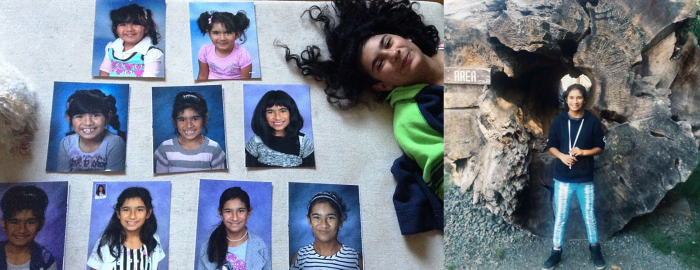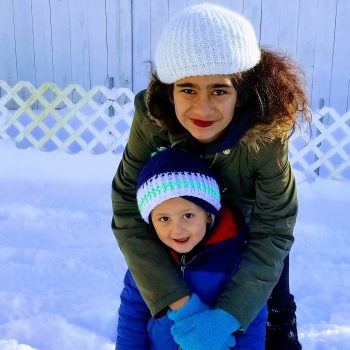
Mya Garcia, 13, has three birthdays. The first one celebrates the day she came into the world. The other two commemorate the days she was brought back to life.
When she turns 18 years old, her mother, Jamie Gonzalez, has a special gift for her miraculous daughter – a heartfelt letter to honor a day she was worried may never come. It’s a letter she’s been holding onto since her daughter was just 4 years old. She wrote it after Mya received the ultimate gift – a second heart; a third chance at life.
“I wrote her a letter to open when she turns 18 that shares in detail everything she went through after she was born, so she truly knows how hard she had to fight for her life,” Gonzalez said. “I don’t ever want her to take her precious life for granted.”
In 2006, three weeks before Mya was due to be born, an ultrasound revealed she had a serious congenital heart defect and her heart rate was dropping rapidly. Gonzalez was induced, and soon after Mya arrived, she was transferred to Seattle Children’s neonatal intensive care unit (NICU).
“It was awful and traumatic,” Gonzalez said. “I just remember holding her tiny little hand hoping everything would be ok.”
The road to her second birthday
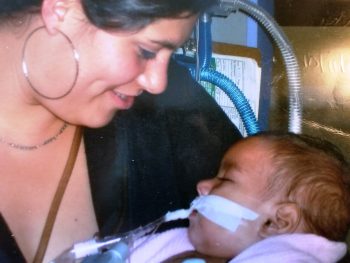
Mya was diagnosed with double outlet right ventricle, which occurs when the heart’s two major arteries, the pulmonary artery and aorta, both connect to the right ventricle. In a normal heart, the pulmonary artery connects to the right ventricle, and the aorta connects to the left ventricle. Double outlet right ventricle is problematic because it causes the right ventricle to circulate oxygen-poor blood to the body and organs, which require oxygen to remain healthy.
Mya was in the NICU for 11 months as Seattle Children’s Heart Center team worked to stabilize her and examine if they could repair the heart surgically. Unfortunately, her heart condition was so complex a surgical repair was not an option. It became clear she needed a new heart.
And in August 2006, she received her second chance at life.
“I was shocked to hear she needed a new heart,” Gonzalez said. “And I was so thankful to the donor family who gave her such an amazing gift.”
Unfortunately, Mya’s fight was not yet over. In fact, the worst was yet to come.
Mya fights for her life
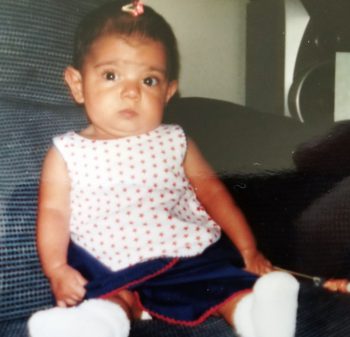 Over the next few months, Mya was trying to adapt to the new heart, but in the beginning of 2007, her body began rejecting it. In April, the rejection escalated and she was back in the hospital with hemolytic anemia, which is when the immune system attacks and destroys red blood cells.
Over the next few months, Mya was trying to adapt to the new heart, but in the beginning of 2007, her body began rejecting it. In April, the rejection escalated and she was back in the hospital with hemolytic anemia, which is when the immune system attacks and destroys red blood cells.
“I remember when I first met Mya she was in pretty rough shape,” said Dr. Yuk Law, medical director of Seattle Children’s Cardiac Transplant and Heart Failure Service. “Her body was rejecting her heart to the point that it also began to attack itself.”
A change in her immunosuppressant medication helped get her into remission from her rejection and she was able to go home, but in December of that year, she was back in the hospital in a dire situation. Her heart was not functioning properly and she needed to go on extracorporeal membrane oxygenation (ECMO), which is a life-saving technology that functions for the heart and lungs when the organs fail or need to rest. Seattle Children’s is nationally recognized as a leading center of excellence in providing this form of advanced life support.
On ECMO, her heart was able to rest and return to normal function, but soon after she came off of the life support, she went into cardiac arrest.
“I’ll never forget when they called me into the ICU because her heart had stopped,” Gonzalez said. “I was shaking and so scared I would lose her. All I could think was please just fix her.”
The heart team was able to revive her, but it soon became evident that she would need yet another new heart.
“It was a scary time,” Law said. “With the state of rejection she was in, we were really worried whether or not her heart function would come back. With ECMO and meticulous medical care by the pediatric intensive care staff, we were able to stabilize her, but we knew with how hard her body was fighting against her heart, it would not last.”
She was listed for a new heart in December 2008, and three months later, she got her third chance at life.
A third birthday, another roller coaster
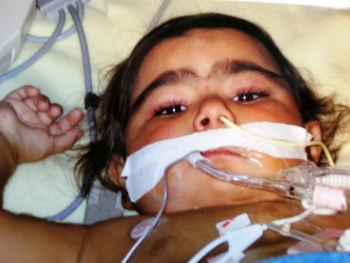 On March 25, 2009, when she was about 3 and a half years old, she received her second heart transplant. In the operating room, surgeons discovered her previous heart had calcified. Parts of it had nearly turned to stone from the war her body had waged against it.
On March 25, 2009, when she was about 3 and a half years old, she received her second heart transplant. In the operating room, surgeons discovered her previous heart had calcified. Parts of it had nearly turned to stone from the war her body had waged against it.
The new heart was in, but Mya faced another challenge. It did not “start up” or function immediately.
“Despite modern surgical know-how, if you think about the physiological insult that a heart goes through – from the trauma that occurred in the donor, to the shock of being removed, transported and transplanted into the recipient – you never really know how and when the new heart will ‘wake up,’” Law said.
Again, Mya was placed on ECMO, which functioned for her heart, giving it time to rest. About a week later, she was able to come off the life support.
But she faced one last hurdle. In early April, doctors discovered she had supravalvular aortic stenosis, which meant there was a narrowing in the connection to the aorta. Surgery addressed the narrowing and allowed her heart to fully regain function.
Finally, her heart had found its stride.
“It was such a difficult journey because I thought I’d lose her so many times,” Gonzalez said. “I wondered if her care team could keep her alive despite all she went through, and they did an amazing job. I can’t thank them enough. They’re like a second family to her.”
Embracing life
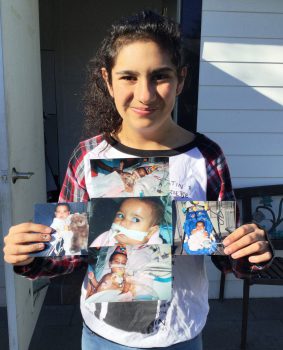 This March marked the 10-year anniversary of Mya’s second heart transplant.
This March marked the 10-year anniversary of Mya’s second heart transplant.
“It was like she was reborn, twice, and we’re so thankful to the donor families who gave her that incredible gift and chance to experience life,” Gonzalez said.
Today, Mya is like any other middle-school girl her age. She loves jumping on the trampoline, shooting hoops, and most of all, dancing to her favorite Justin Bieber songs.
“She’s an incredibly funny, kind and caring girl who you’d never know had two heart transplants,” Gonzalez said. “I’m really proud of her. She’s gone through so much and she’s turned into an amazing girl.”
For Law, Mya also holds a special significance in his heart because she was one of the first patients he cared for when he arrived at Seattle Children’s 13 years ago. She was also one of the first 12 patients to receive a heart transplant after the launch of Seattle Children’s Cardiac Transplant and Heart Failure Service. Today, Seattle Children’s has one of the top five busiest heart transplant centers in the nation.
“Mya is an incredibly special girl,” Law said. “She overcame tremendous adversity and really beat the odds. She and her family weathered so much, and I admire them for their strength. Seeing patients like Mya thriving today like any other teenager is why we do what we do. It’s the ultimate goal.”
